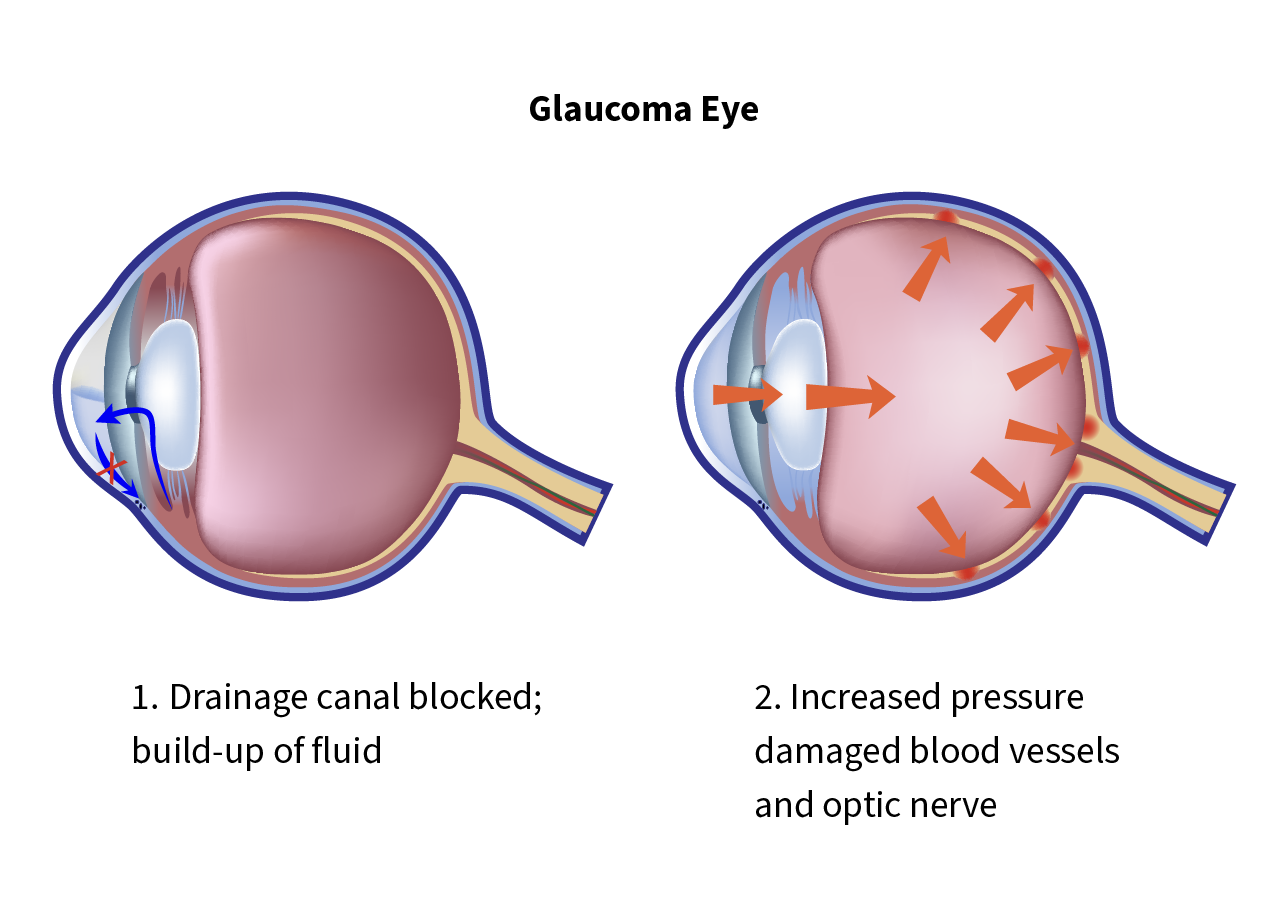





Glaucoma is generally caused by a buildup of pressure inside the eye, which happens when the eye’s natural drainage system becomes less efficient or is blocked.
This increased eye pressure may be caused by a number of things, including gradual drainage inefficiency (often associated with open-angle glaucoma), sudden drainage blockages (associated with angle-closure glaucoma), structural abnormalities present from birth (congenital glaucoma), or even eye injuries and other medical conditions.
Glaucoma vision typically begins by first affecting side (peripheral) vision, leading to blind spots at the edges. Over time, the damage can work towards the central vision, resulting in noticeable blurring or dimming in what the patient sees.
Early glaucoma patients often report needing more light, experiencing glare, or seeing reduced contrast. They may also report tunnel vision.
Glaucoma is detected using diagnostic tests such as tonometry (measuring intraocular pressure), visual field tests (detecting peripheral vision loss), and inspection of the optic nerve via imaging (e.g., OCT) or dilation, combined with angle assessment.
These tests must be conducted by an eye specialist to be properly diagnostic, not by the patient in a self-test.
No, vision loss due to glaucoma is permanent and cannot be reversed. Early detection by an eye doctor is therefore crucial in managing this condition.
Glaucoma is serious and may lead to irreversible vision loss if untreated, but it is not classified as a “critical illness” in the same way a stroke or cancer is. It nonetheless requires vigilant long-term management.
With early detection and a proper treatment plan, glaucoma can be managed, and vision loss can be prevented or slowed through medication, laser treatments or surgery.
All surgeries carry risks (e.g. infection, bleeding, pressure fluctuations), but glaucoma surgery often sees success rates within 70% to 90% during the first years following the procedure. It may help slow or prevent further vision loss, even though it generally cannot restore vision already lost.
Glaucoma currently cannot be cured and any vision loss from it is permanent, but treatments (e.g. drops, lasers, surgery) may slow or prevent further damage.
There are a few ways to reduce glaucoma risk or slow its progression.
Regular eye exams, good control of eye pressure, and management of conditions like diabetes or hypertension are important. Using protective eyewear to prevent eye injuries and avoiding medications or habits that raise eye pressure can also help protect vision.